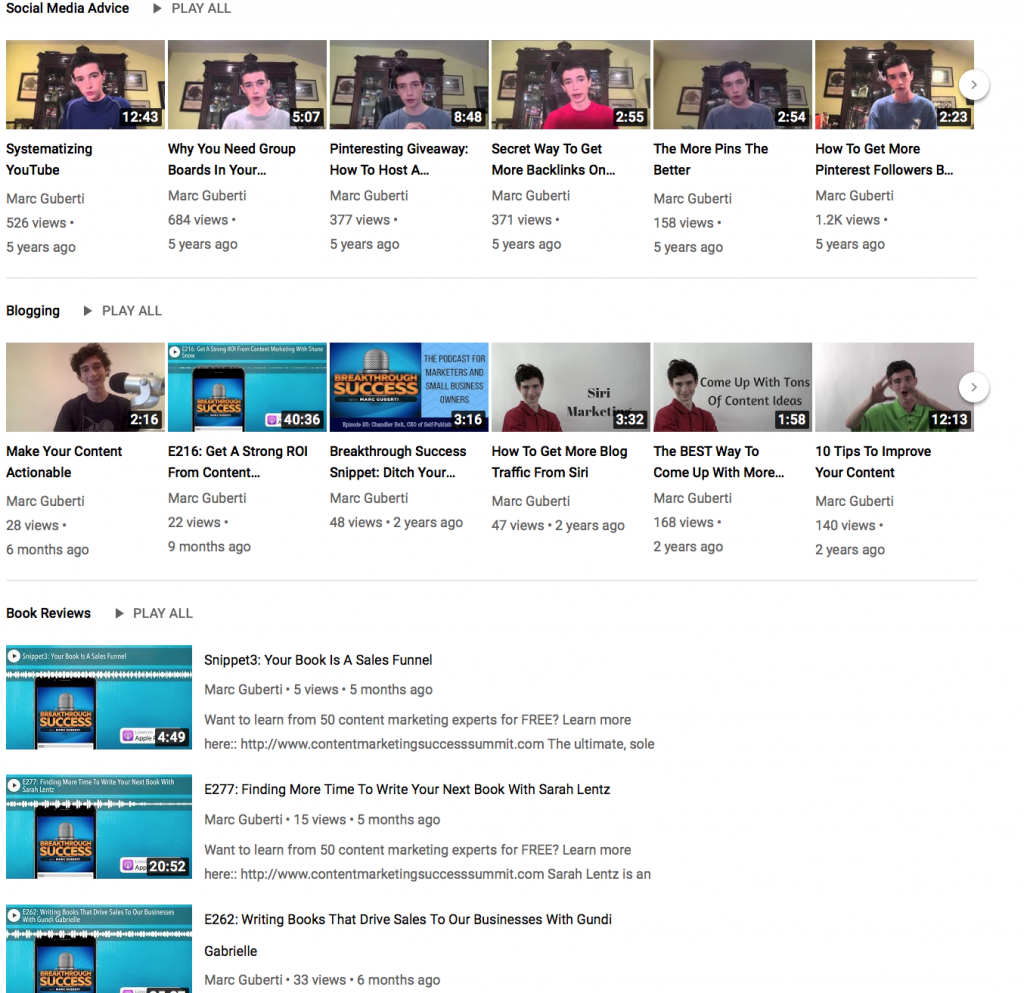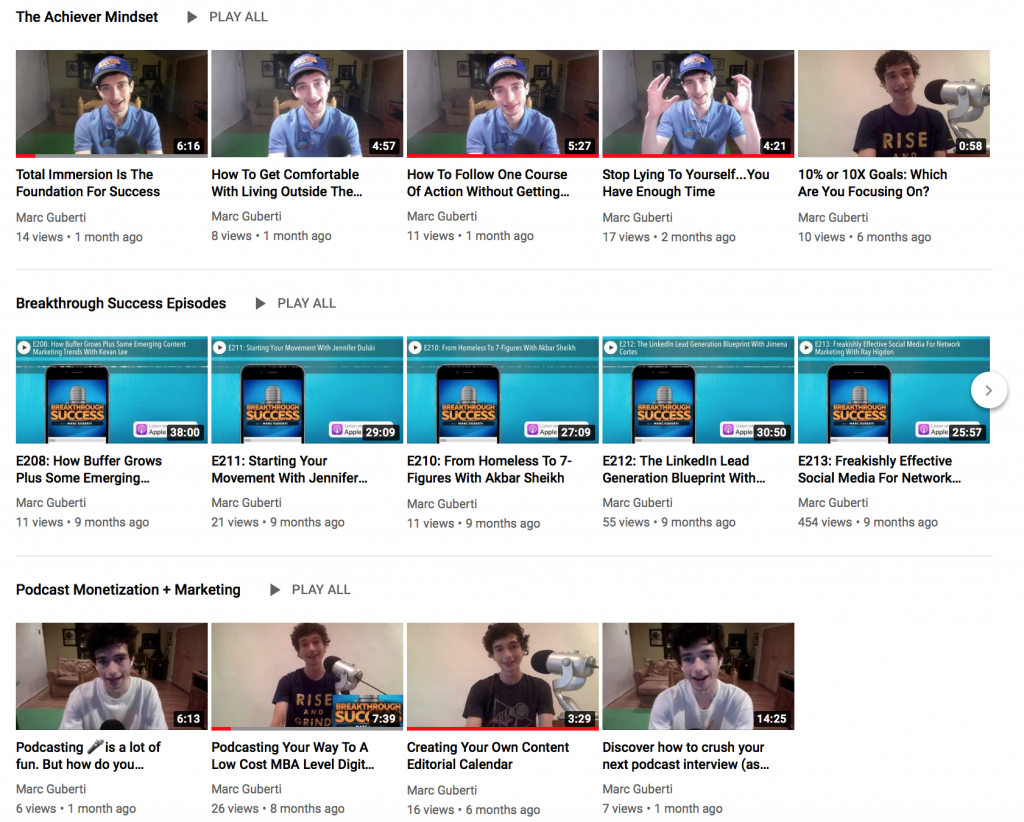Your content portfolio consists of all of the content you’ve ever published online. While it’s fun to keep on creating content, we need to assess what we have and how well our content has performed.
Assessing your content portfolio allows you to discover what your audience likes. It also allows you to discover what can change.
For instance, I frequently update my YouTube channel, but to any new viewer, this is what my YouTube channel looked like for a long time…

I have a few of the latest uploads on the top, but for the most part, this is a bunch of videos I did in the past. Are they good? Questions like those are always up to the viewer.
But should I be leading with them? Probably not.
My current videos are more branded than those videos. I have a bunch of interviews I’ve done with awesome people that only show up as recent downloads. I recently changed that part of my YouTube channel to make it look like this:

That’s an example of assessing your content portfolio and making the right changes. I was putting out new YouTube videos but still leading with my old stuff. I was also making it difficult for people to find the specific videos they were looking for.
Organizing Your Content
The goal of assessing your content portfolio is to better organize your content to provide your visitors with a better experience. I’ve uploaded hundreds of YouTube videos, and for my viewers to find the right one with the original set-up, it could have felt like finding a needle in a haystack.
With the new structure, I now provide my viewers with a higher value experience. This is one of the benefits of assessing your content portfolio, but we haven’t scratched the surface.
The Most Engaging Content
Not all of the content you create is equal. Some of it will get no engagement and other pieces of content will get massive engagement.
When I saw people liked my Twitter articles, I created more Twitter focused articles. When that changed to content marketing, I adapted based on my audiences wants.
Right now, I see a big demand for self-publishing and becoming a bestselling author. For the most part, I know focus on that kind of content while also addressing the content marketing folks.
Knowing what’s worked the most allows you to put more of your focus on the right areas moving forward.
Monetization Potential
When you discover what content engages people the most, you also know what products are most likely to sell within your audience.
Part of the reason I wrote The Wealthy Author was because the Wealthy Author Summit was a recent success. More people wanted to learn things like how they could write books and turn those books into passive income.
I’ll also look at future product ideas and create free content that I can later repurpose into the paid stuff.
I don’t just put out any content for the sake of it. I’m out there providing value but also thinking monetization. With that said, you don’t want to safeguard all of your best content for paid products because people see your free content as the preview for your paid content.
No matter how great your book or course is, if people don’t like your free content, they won’t buy your products.
In Conclusion
Assessing your content allows you to make smarter decisions for future pieces you put into the world. You also get to see some of the existing flaws with how you present your content. YouTube was a glaring one for me especially with the work I’m putting into the channel’s growth.
What are your thoughts on assessing your content portfolio? Do you have any questions for me? Sound off in the comments section below.

Leave a Reply